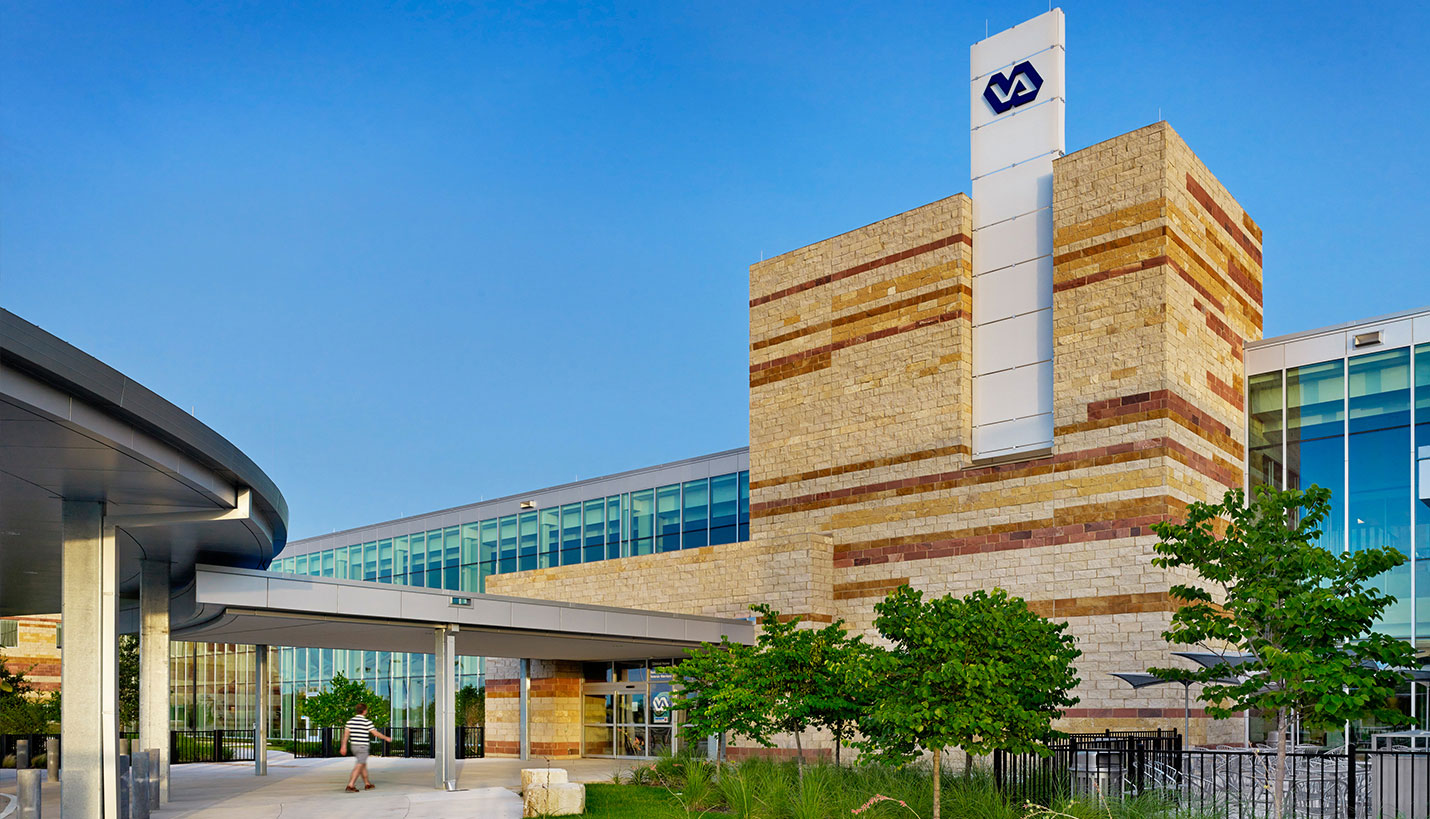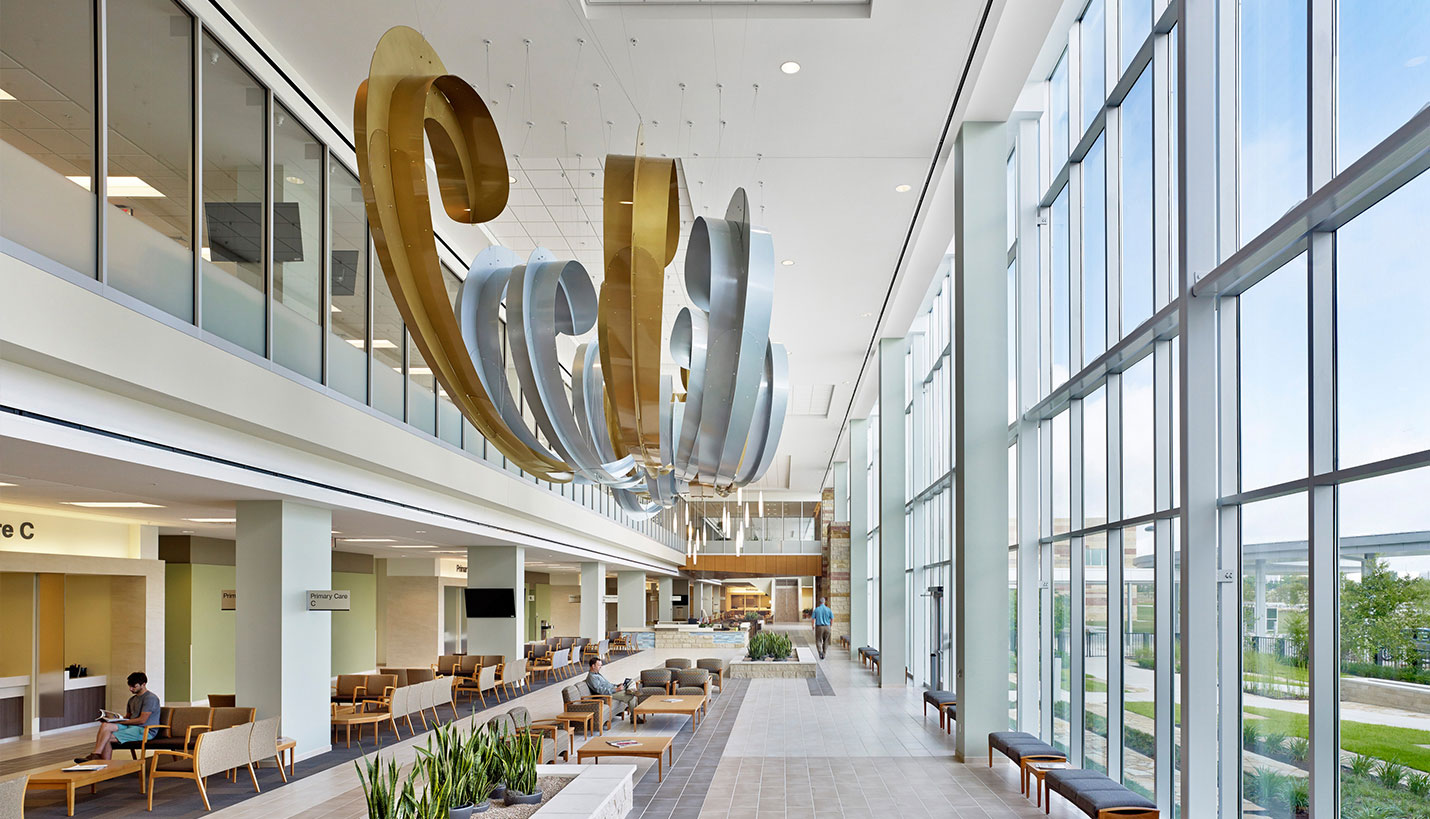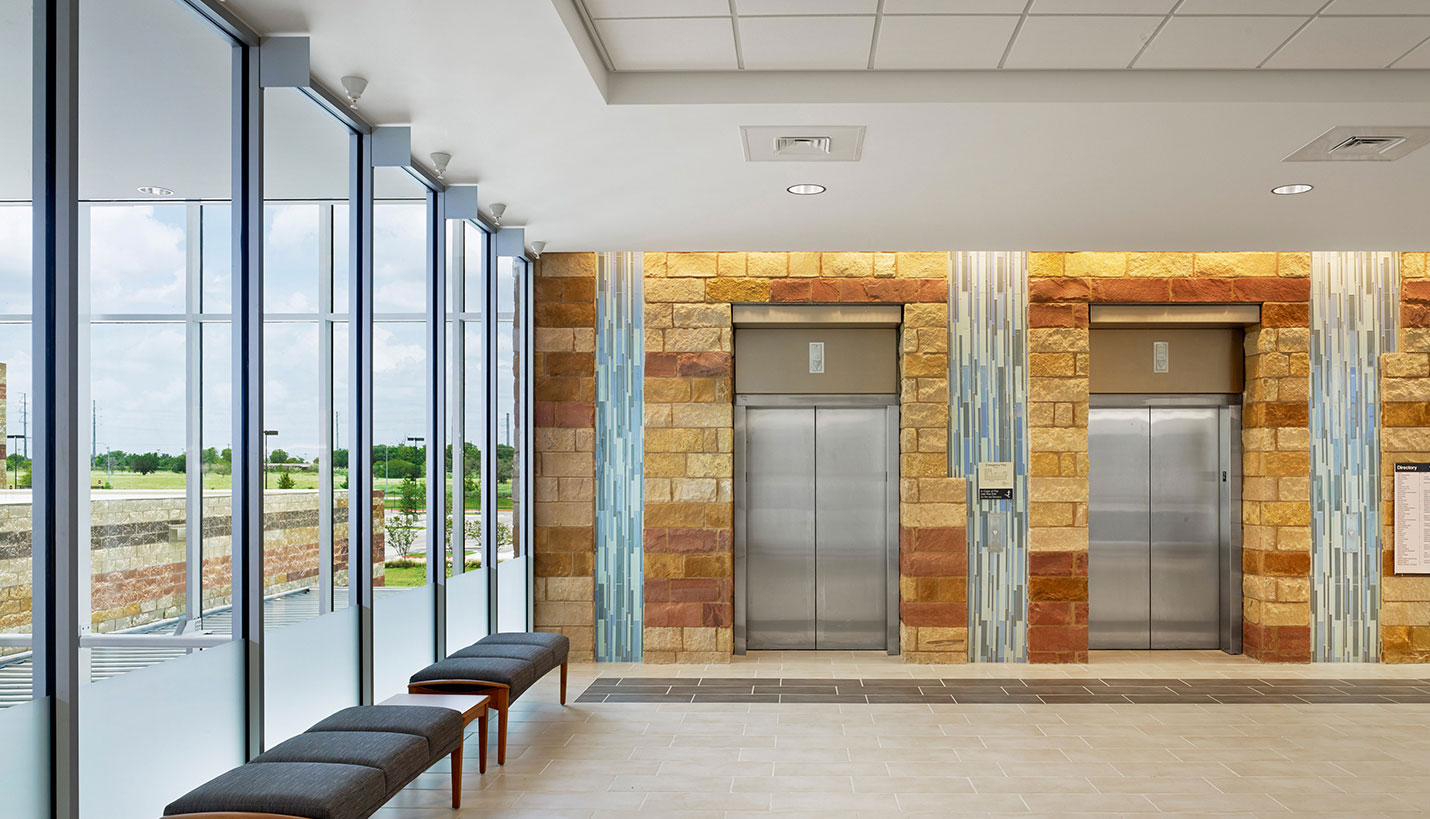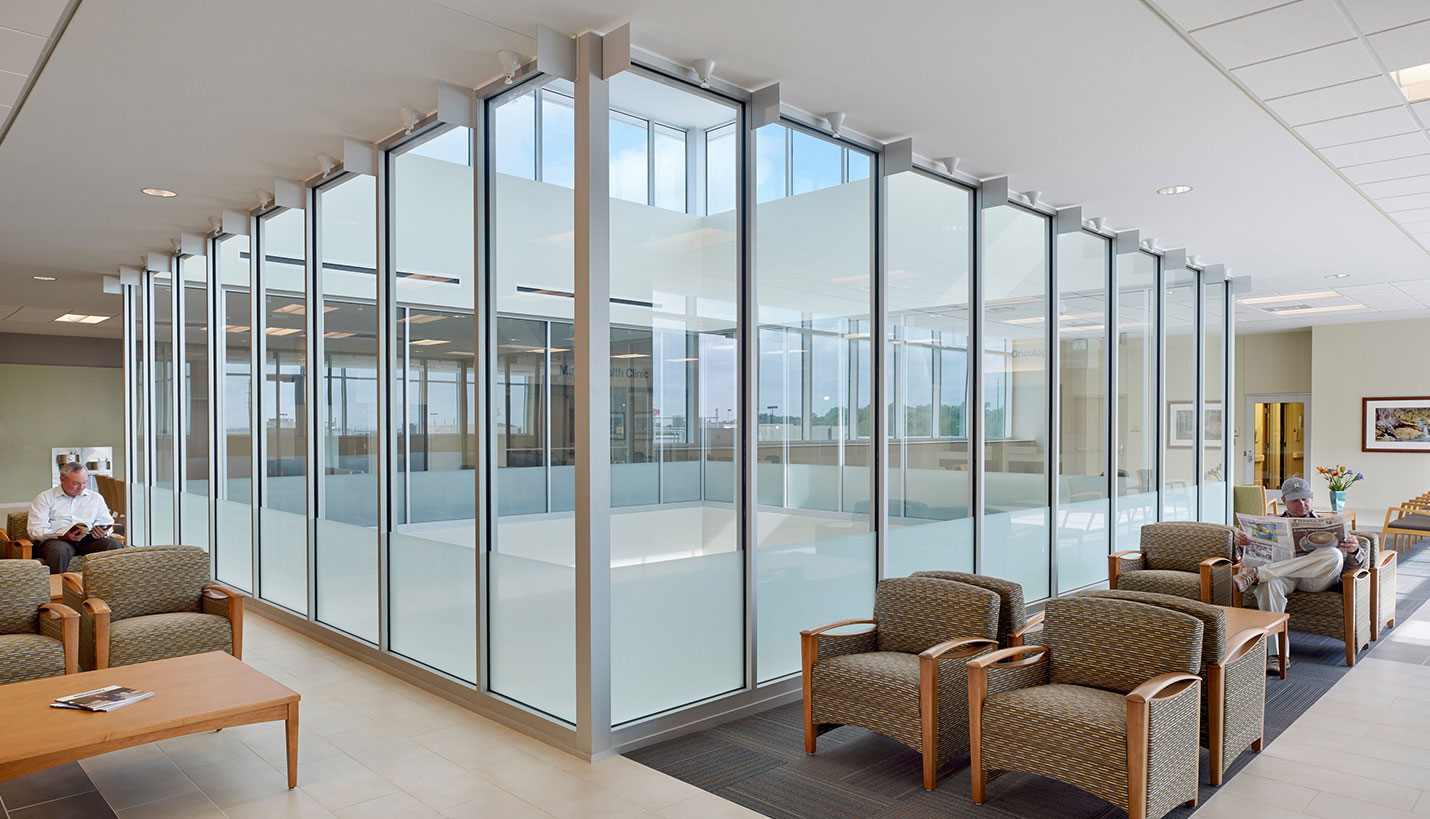Designed “to care for those who have borne the battle,” the Austin VA Outpatient Clinic embodies the mission of the U.S. Department of Veterans Affairs. Patient-centric philosophies have been incorporated with architectural concepts that reflect the unique geological characteristics of Central Texas. The building’s exterior and public interior spaces feature horizontal bands of masonry and native leuders limestone, which allude to rock formations at nearby McKinney Falls State Park, located just two miles away. Designed to LEED Silver equivalency, the 260,000-square-foot facility is the largest freestanding VA outpatient clinic in the U.S.
The facility’s future users, both patients and staff, helped guide the design process, and their input is manifested in several ways. Interiors are designed to enhance the care given to patients and their loved ones, as well as inspire the caregivers by providing a workplace that gives staff members a sense of pride, which in turn encourages a better quality of care. The design also maximizes energy efficiency while creating light-filled public spaces and corridors illuminated by floor-to-ceiling windows that offer occupants visual connections to the outdoors. The horizontal configuration demonstrates a connection to the natural environment, which is intended to be a calming influence for users undergoing stressful situations. The use of natural materials further also helps make that important connection to nature.
The private clinic areas were designed with equal sensitivity to the user’s experience. The Austin VA eliminates the tall counters of traditional nursing stations to avoid creating barriers between caregiver and patient and/or family. Instead, nurse work areas open up to the corridors to encourage interaction among patients and the nursing staff. Seating areas provide comfortable areas for family members to meet with nursing staff. At the ends of long corridors, 12-foot-tall windows bring daylight deep into the clinical areas while also providing occupants with views to the outside. Oversize windows allow occupants to know if it is cloudy, sunny or raining – an instant connection to the exterior environment.
The design of the Austin VA Clinic’s exterior is noticeably influenced by the rugged natural landscape of the Balcones Escarpment. The weathered stone, flowing water and alluvial soils of McKinney Falls State Park are abstractly represented by native chopped-face limestone masonry, a north-facing curtain wall that opens the public concourse out to the healing garden and the horizontal split-face masonry banding that gives the building its decidedly horizontal appearance. These tactile natural materials are placed in close proximity to the users of the clinic, focusing on patient and staff entries on the north and south sides. Less expensive materials are used in less accessible places away from the entrances, a strategy that allowed the design to remain cost effective without detracting from the central design concepts.
The building is oriented toward the north to minimize solar heat gain and is organized along a grand public concourse that runs east/west. A clerestory at the upper reaches of the concourse illuminates the interior with abundant daylight yet restricts excessive heat load, uncomfortable shadows and harsh direct sun. The concourse serves double duty as the building’s primary wayfinding tool and a waiting area. On one side are clinic registration and entry portals; on the other is a wall of glass that looks out onto a healing garden composed of local materials and native plants of Central Texas. The interior design of the concourse space also takes its cues from the outside garden and brings those forms, colors and textures into the interior environment.
The Austin VA’s 37-acre site includes 1,278 parking spaces interwoven with landscaped grounds planted with drought-resistant native species. Thoughtfully integrating the grounds with the building design provides opportunities for both solitude and social gatherings that are sheltered from the surrounding parking. The landscape is organized around a series of gathering areas strung along an accessible path that meanders through the enclosed garden. From the covered entry and drop-off area on the building’s north side, the path enters the enclosed garden and approaches a plaza that continues many of the region’s geological forms and materials used in the lobby. The path leads to a corner labyrinth and through a meadow of native grasses and flowers on a commemorative memory walk, and on to a gathering area at the south entrance.
Outpatient services offered at the facility include primary care, urgent care, diagnostic imaging, behavioral health, pharmacy and specialty services such as cardiology, nephrology, neurology, oncology, endoscopy, cytology, urology, minor surgery, ENT, dental, ophthalmology, audiology and a self-contained women’s clinic. Delivered by a design-build/developer team, the Austin VA Clinic was completed 75 days ahead of schedule and is considered by federal government officials as the new flagship of the VA’s nationwide outpatient facilities.
















